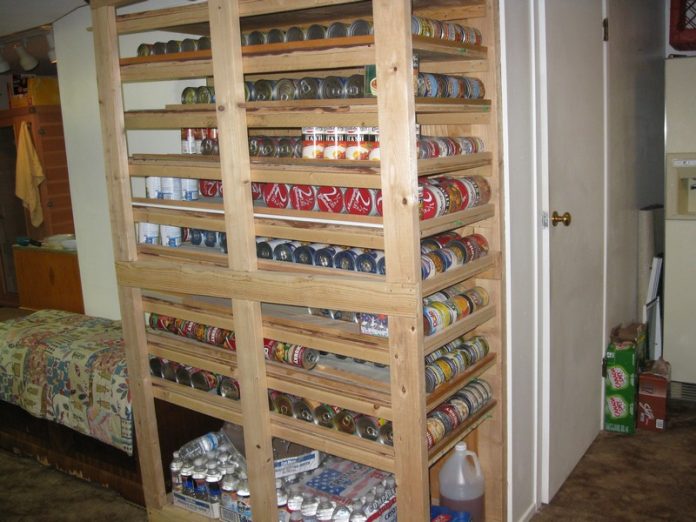One of the major problems people face with storing their food preparedness is a lack of space. They simply don’t have enough space to keep all the food they’ll need in case of an emergency, causing them to feel under-prepared.
Space may seem one of the primary challenges to your food storage goals, but it doesn’t have to be. Whether you’re living in an apartment, a tiny home, or even a camper, there’s plenty of ways you can fit in more food storage to keep your family ready if the worst happens.
Get Creative with the Space You Have
You may think of your food storage space as a basic, traditional space that you have designated for food storage, such as a pantry or a collection of shelves in the garage or basement (although I definitely do not suggest that you store food in those places unless it is pest-proofed and climate controlled!). If you want to get serious on your food storage on a small footprint, you might start thinking a little outside of the box when it comes to where you are going to store food. Below are some suggestions you may not have heard of bringing in further food storage.
- Add custom shelving to under-stairs areas to provide extra space for food storage.
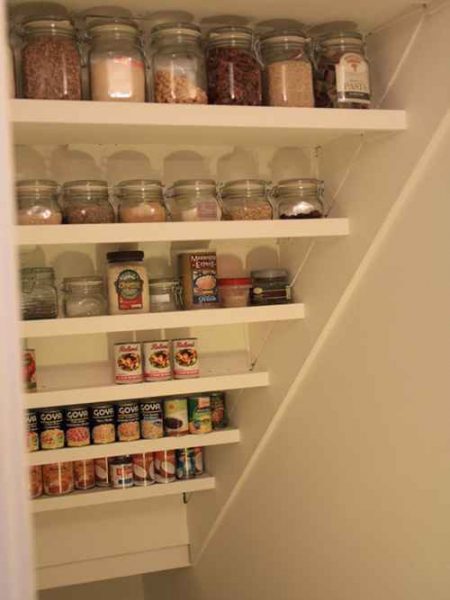

- Use unusable area in the cupboard more effectively. Often we forget about those hard-to-reach spaces as on top of the cabinets and awkward or high-up cabinets. These end up packed with junk-drawer-esque items because you can’t really easily reach them anyway, so they’re great for storing food in an emergency.
- Upper closet shelves are often spaces which are underutilized.
- Store food under the beds, and lift it up if there isn’t much space between the bed base and the floor.
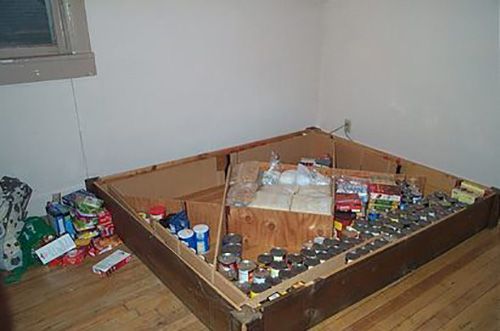

- Never ignore space inside storage items, such as baskets or luggage. Since you already store these things, go ahead and put some food storage inside them.
- Try to create ‘furniture’ from foodstuffs stored. Instead of traditional tables on the end or on the bedside, switch it to a stack of canned goods with a piece of wood cut to size. Place a table cloth over it and nobody ever knows the difference.
- Utility room space is also perfect for food storage as long as your food storage does not pose any hazards with the appliances and household appliances in it.
- Using storage items such as over-the-door racks and trendy basket racks to set up space for your food storage.
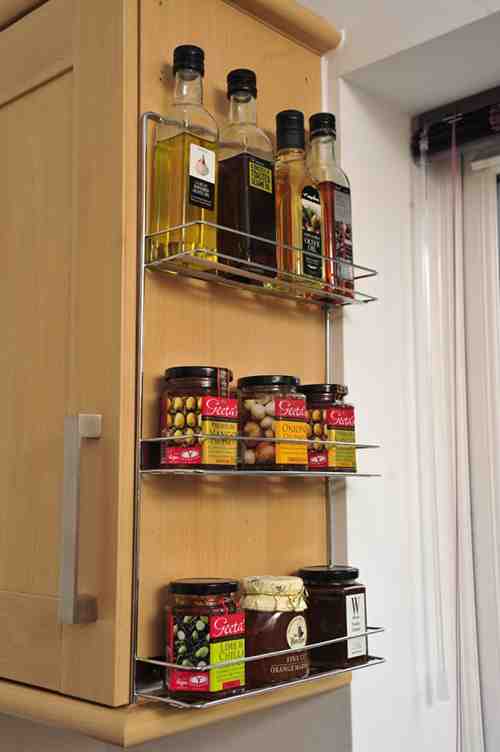

- Attach shelves to cabinets, so they’re better laid out to store your personal food storage. This is one time the cabinets are a life-saver with adjustable shelves!
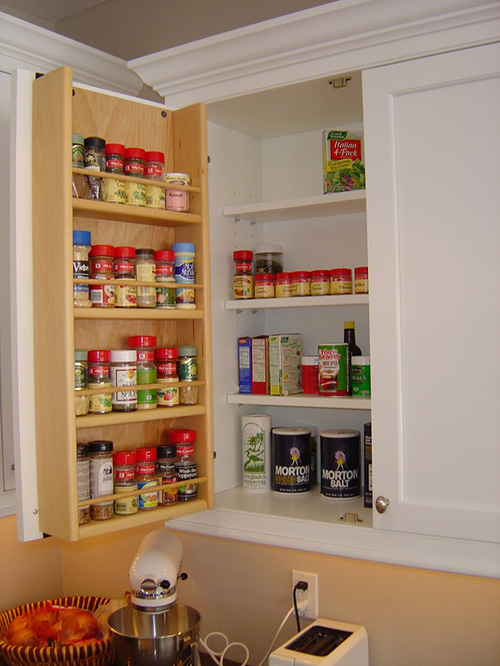

- Store water in a bath or shower which is not in use. Water storage can take up A LOT of space, but it’s extremely necessary for your family to have sufficient water storage. Use these waterproof spaces or invest in some water storage cubes that stack tidily to prevent it from taking up more space than it needs.
Related: Year-Long Guide to Stockpiling
Opt for Bulk Goods that Fit in Your Spaces
We tend to get caught up by the spaces that we have to deal in, so make sure that you use them to their full advantage. Although larger containers typically take up less room with the same amount of food, you’ll want smaller products to fill in gaps.
It’s easier to fit into more food if everything is packed the same way. To make the most of limited space, buy or store food in containers of the same size where possible.
Always make sure to have things lined to their benefit. In boxes on your pantry shelves, mix and match various sizes and shapes of products so that you can make use of as much of your available space as possible top to bottom. Put things that don’t stack well into boxes so that they do, so you can use more space.
Related: 12 Essential Food to Stockpile Before It’s Off the Shelves
Use Flexible, Non-Wasteful Storage Methods
Bags are a perfect way of bringing a little more packing into a small room. Mylar bags with oxygen absorbers are much easier to cram into tight spaces than giant containers, or even #10 cans.
Packing things in vacuum sealed bags is another way of saving some space. Sometimes, you pay (in space, of course) just for the way everything at the supermarket is packed up. Vacuum bags ensure you don’t waste any space to hold the air.
Utilize Wall Space
Just because there’s no space on a wall for a full collection of shelves doesn’t mean it isn’t useful for storing food. To provide extra space for canned goods, install a wall-mounted can organizer. It is ideal for walls behind doors which are often overlooked because of their capacity for food storage because there is not much room available.
This is a great way to ensure that your canned goods are properly rotated as well, first using the oldest foods and the newest remaining inaccessible at the top of the organizer.
Related: Why You Should Build and Use a Root Cellar?
Opt for Food with a Smaller Footprint
Dehydrated food takes up less space. The water has already been drained, leaving for optimum storage smaller footprint food that can be packed in vacuum. Opt for dehydrated foods over canned goods wherever it is feasible. Most foods can be re-hydrated later, if necessary.
Investing in small foods that pack a large caloric and nutritious punch is another way of aiming for a smaller food footprint. While it is important to have a balanced diet, focusing on higher calorie foods such as whey protein, avocado powder, dried fruit, seeds, nuts, and quinoa to fill up a very limited space is equal to more energy that can be hard to get through for a long time after a disaster to fuel you.
Related: How to Make a Nutritious One-Year Shelf-Life Vitamin Bar for Your Stockpile
Make Sure to Store Food Properly, Even when You’re Storing Small
Even if you function with a small room, it’s important that you abide by the standard food storage laws. Be sure you keep your stores healthy from changes in weather and pests, and be sure you recycle food storage so you use older foods in your regular diet and substitute them with new versions. This helps to avoid wasting food (and money!).



